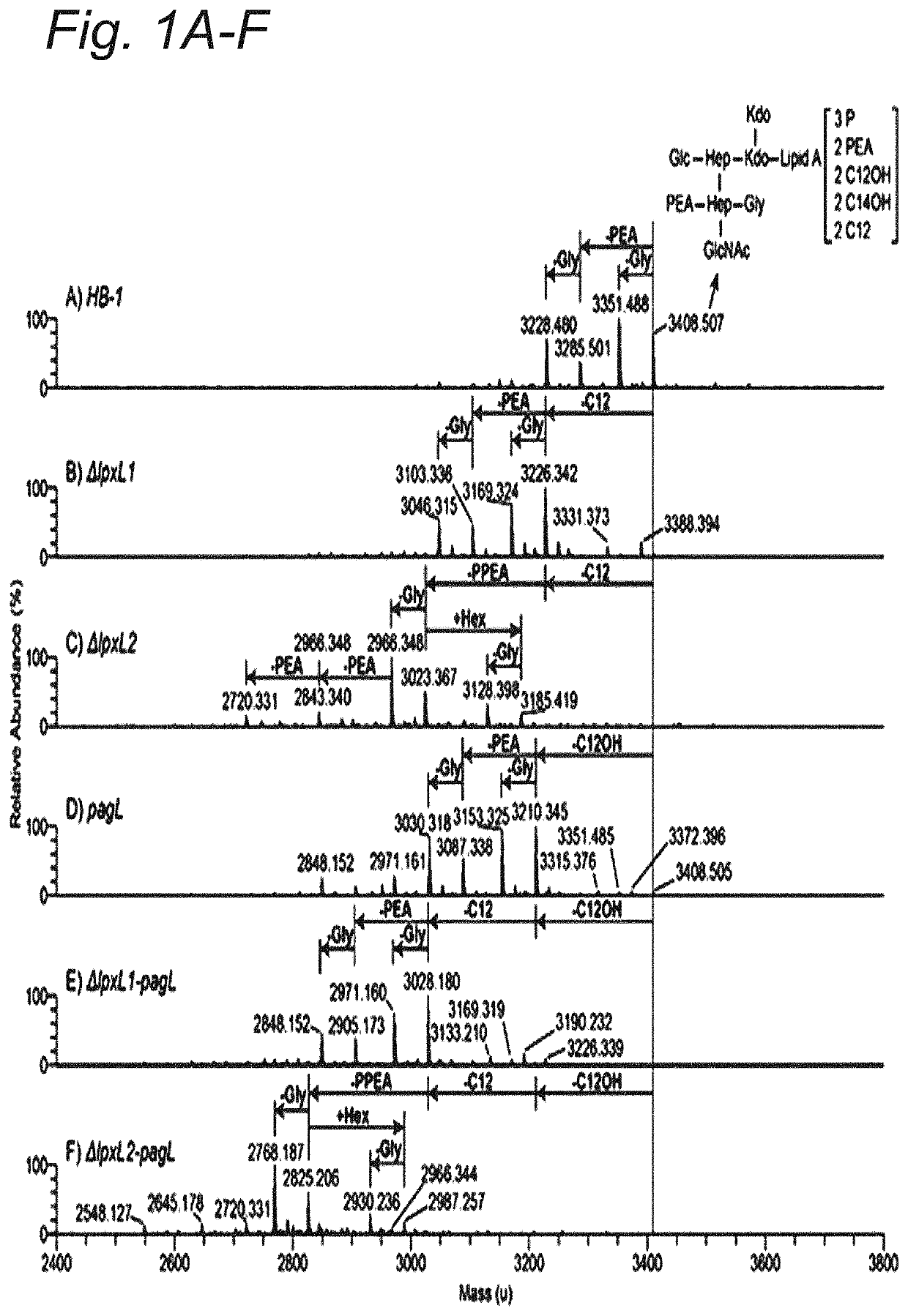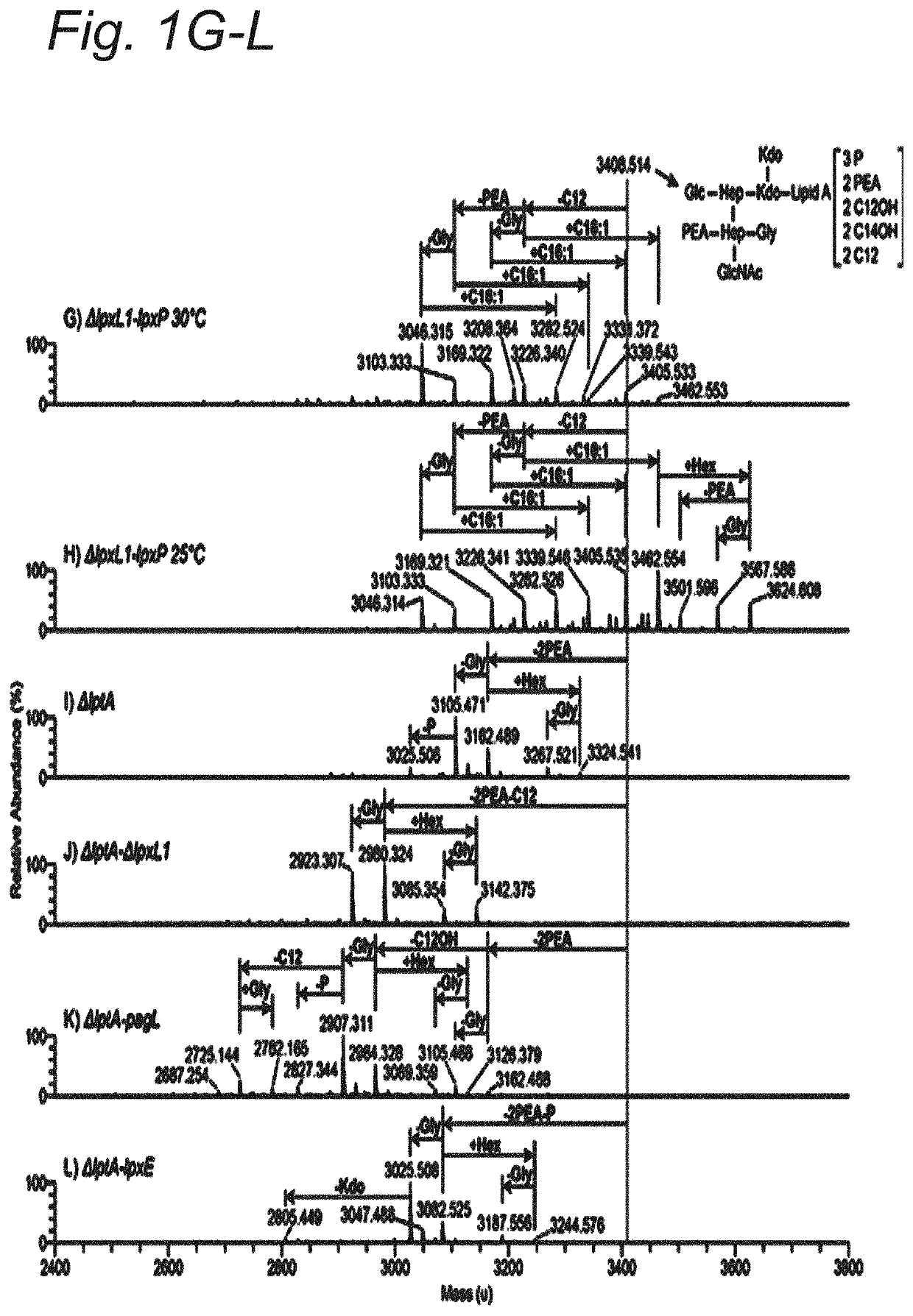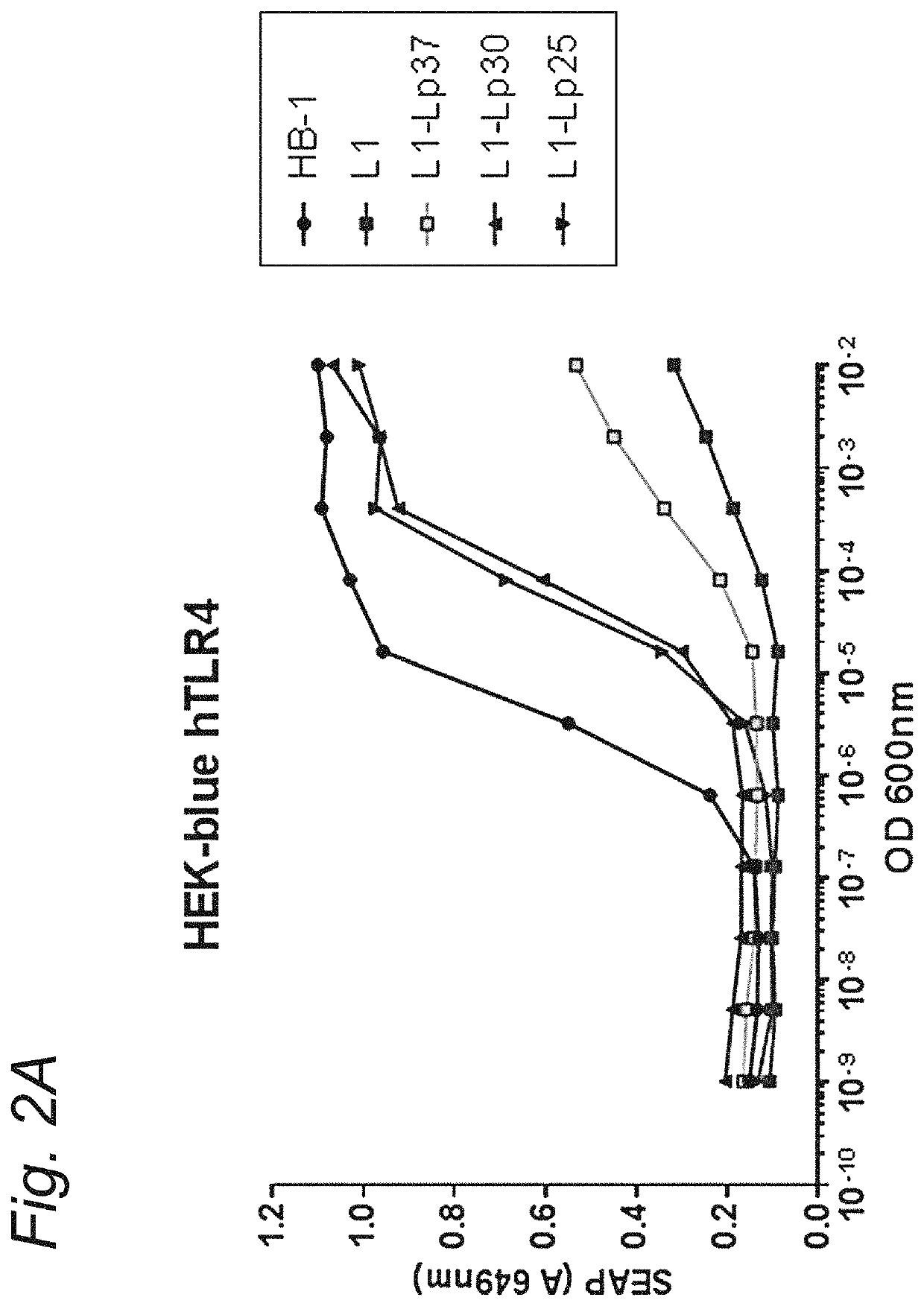Modified hexa-acylated neisserial LPS
a technology of hexaacylated neisseria and modified hexaacylated neisseria, which is applied in the field of medicine, can solve the problems of reduced activity of this modified lps, life-threatening conditions, septic shock, etc., and achieve the effect of reducing the immunogenicity of the peptid
- Summary
- Abstract
- Description
- Claims
- Application Information
AI Technical Summary
Benefits of technology
Problems solved by technology
Method used
Image
Examples
examples
1. Methods and Materials
1.1 Bacterial Strains and Plasmids
[0103]All mutants were created in a N. meningitidis H44 / 76 strain (HB-1) strain using plasmid pMF121, resulting in deletion of the capsular biosynthesis locus including the galE gene. N. meningitidis strains were grown on GC medium base (Difco) plates supplemented with IsoVitaleX, in a humid atmosphere containing 5% CO2 at 37° C. For liquid culture, strains were grown in 36 mg / mL tryptic soy broth medium (Difco) in a conical flask at 37° C., shaken at 140 RPM. Required antibiotics were added to plate and liquid cultures (kanamycine 100 μg / ml, chlooramphenicol 3 μg / ml). The lpxL1 and lpxL2 mutants were obtained by transformation with a linearized PCRII plasmid (Invitrogen) carrying the genes with a kanamycine resistance cassette described by van der Ley et al. (15) or a pGem T easy plasmid (Promega) with the lpxL1 gene that has a deleted section replaced with a chloramphenicol (CAM) cassette. For the lptA mutant the gene was a...
PUM
| Property | Measurement | Unit |
|---|---|---|
| temperature | aaaaa | aaaaa |
| temperature | aaaaa | aaaaa |
| diameter | aaaaa | aaaaa |
Abstract
Description
Claims
Application Information
 Login to View More
Login to View More - R&D
- Intellectual Property
- Life Sciences
- Materials
- Tech Scout
- Unparalleled Data Quality
- Higher Quality Content
- 60% Fewer Hallucinations
Browse by: Latest US Patents, China's latest patents, Technical Efficacy Thesaurus, Application Domain, Technology Topic, Popular Technical Reports.
© 2025 PatSnap. All rights reserved.Legal|Privacy policy|Modern Slavery Act Transparency Statement|Sitemap|About US| Contact US: help@patsnap.com



